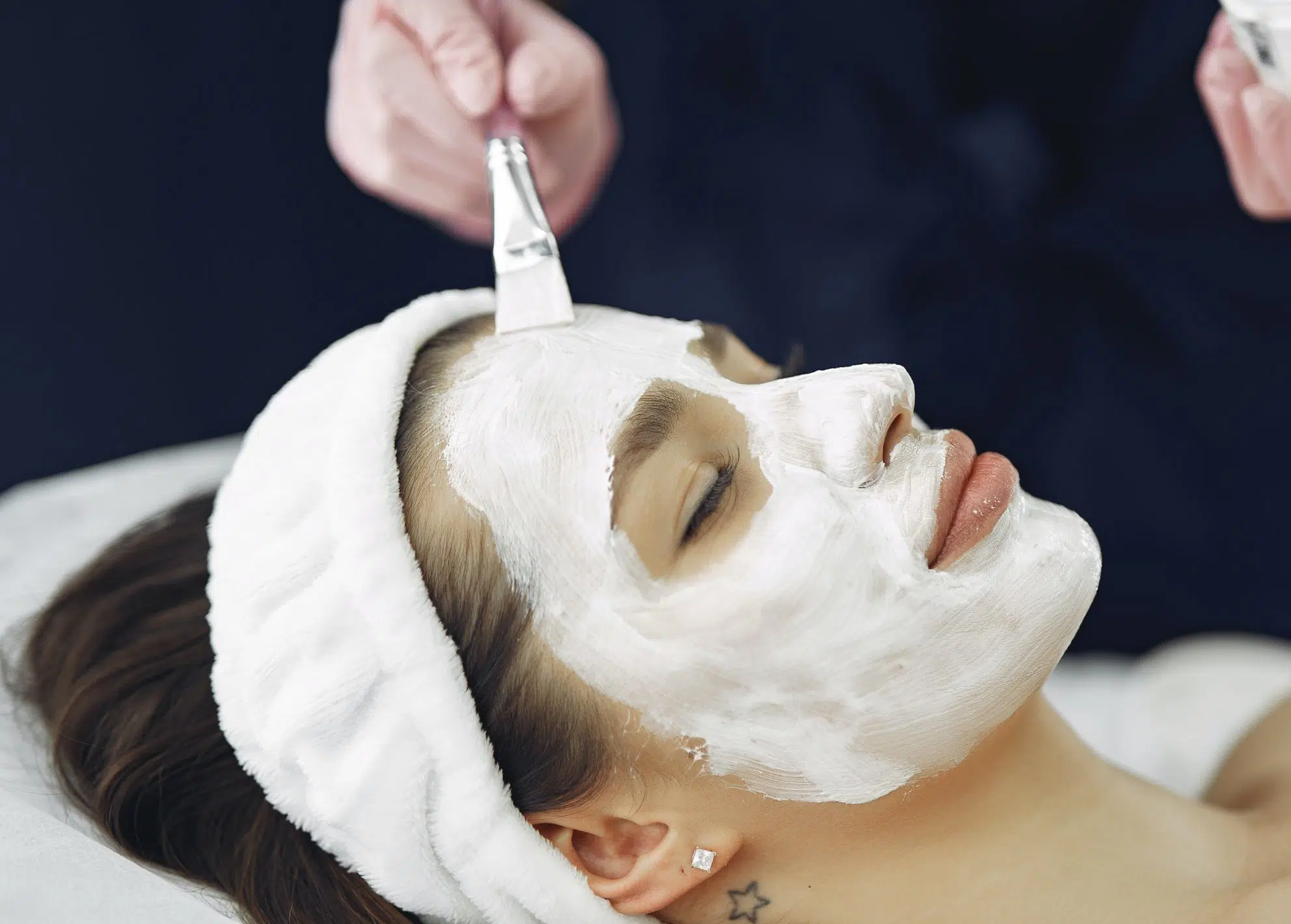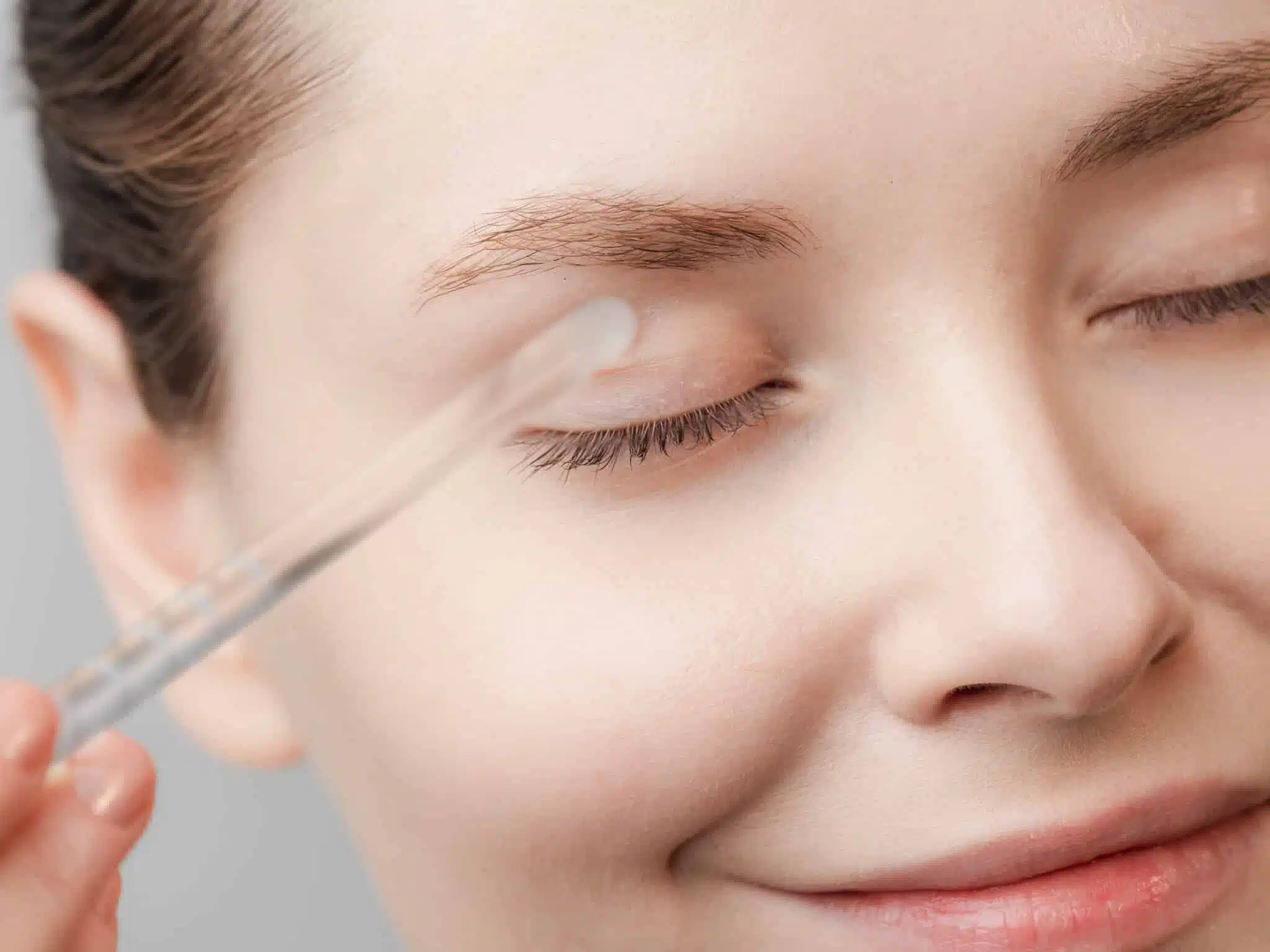From time to time, we hear stories alleging that American abortion mills are selling aborted babies to major cosmetic companies so that they may be “rendered” for their collagen.
Human Life International’s free e-book Which Cosmetics Use Fetal Cells? [1] explains how widespread this problem is, and which beauty products are involved. You can download it free now [1] for a run-down of all the available information.
It is true that cell lines from babies aborted long ago are currently being used in certain vaccines [2] in the United States. The process of developing vaccines using aborted fetal tissue is completely immoral and illicit. According to guidelines published by the Pontifical Academy for Life, the reception of these vaccines is also immoral and illicit, except in certain limited circumstances. For a more complete explanation of when and why, see this article. [2]
But the situation regarding vaccines is different from that of cosmetics. There are no circumstances that can justify using a cosmetic developed using aborted fetal tissue. Cosmetics cannot save lives and they are not necessary. Hence, we have an obligation to avoid purchasing or using cosmetics with connections to abortion.
US Cosmetics: Placentas, But No Known Fetal Tissue
As of this writing, we do not have proof that aborted cells from the fetal body itself are present in US-made cosmetics. Additionally, pro-lifers have not documented any cases of collagen being collected from a freshly aborted baby for cosmetic purposes.
Human collagen from placentas is used extensively in surgical procedures, particularly in cosmetic surgery and in the treatment of severe burns. A number of cosmetic companies also use placentas in their beauty products.
A normal, full-term human placenta weighs two pounds. Placentas from cows, goats, sheep, and yes, humans are used in many cosmetics. But there is nothing illegal about this practice. The placenta is not part of the fetal body. Using human placenta for such purposes is not immoral, unless of course it is procured through an evil action, such as an abortion.
Hospitals and slaughterhouses commonly sell bulk placentas to pharmaceutical companies and cosmetic companies. Cosmetic companies then use the hormones and proteins in hair care products and lotions. These elements supposedly make hair stronger and shinier. In lotions, they are advertised as making skin smoother and suppler.1
It is worth noting that other, non-cosmetic products in the US have ties to fetal cells. The biotechnology company Senomyx, for example, became notorious [8] for its usage of fetal cells [9] to develop artificial taste buds. Researchers would use these man-made taste buds to improve their food’s taste. To be clear, there were never any fetal parts in the foods themselves. However, Senomyx used an aborted cell line from the 1970’s (HEK-293 [10]) to develop these artificial taste buds.
European Cosmetics with Aborted Fetal Tissue
Neocutis
The marketing term “cosmeceuticals”—a combination of the words “cosmetics” and “pharmaceuticals”—refers to products that are applied topically like cosmetics but that supposedly have medical properties that affect the skin like cosmetic surgery.
One of the companies producing “cosmeceuticals” is Neocutis, a Swiss company whose US-based subsidiary is located in San Francisco.2 Neocutis uses additives made from patented processed skin proteins (PSPs) derived from a cell line that originated with an aborted 14-week-old Swiss baby boy. Its skin creams are used for psoriasis, eczema, and for anti-wrinkle (anti-aging) treatment.
Many women who use products by Neocutis do not seem to care that some of its products are derived from an aborted baby. One reviewer enthusiastically recommended the Journée Biorestorative Day Cream, concluding, “If the thought of smearing old fetal cells on your face makes you cringe, just think about what it could do for those expression lines.”3
In terms of destroying respect for human life, Europe is usually at least a decade ahead of the United States. Although this type of practice is relatively rare in Western Europe, the story is different in the East.

Russian Beauty Therapies
What follows might seem like material taken from a particularly inept science fiction pulp novel, but it is an absolutely true [12] story.
For many years, Moscow’s youth-obsessed wealthy have been hungry to find treatments that will reverse the aging process and cure any known disease.
The poorer cities of Ukraine found themselves at the epicenter of a growing practice involving the “harvesting” of aborted children from young women and girls. Research in the early 2000s found that obstetricians in Donetsk and Kharkiv received kickbacks to tell pregnant women that their preborn children were horribly deformed, even when they were perfectly healthy. These doctors then referred these heartbroken women to abortionists, who paid them £100 for their fetal remains but who also offered them much more to delay their abortions until the late second or early third trimester.

Sergei Shorobogatko was one of the investigators of this trade. He said: “When a doctor wants a fetus [to sell], he tells a girl there is a medical reason for an abortion later than 12 weeks. A special procedure extracts it with the placenta.”
The abortionist would then sell the bodies of the babies to one of several Russian corporations for up to £5,000 each, depending upon their gestational ages. These corporations would cut the babies apart, grind up their various organs, dilute the resulting paste, and sell it to Moscow beauty salons for fetal beauty therapies that allegedly “take ten years off your face.” Some of the salons even claimed that their injections could cure such conditions as Parkinson’s disease or Alzheimer’s.
These treatments cost an average of about £10,000, but this cost is no impediment to rich women (and men) who will do absolutely anything they can to hang on to their youth ― regardless of who suffers or dies as a result.
Incredible as it may seem, these salons flourished despite the fact that every step of this process is entirely illegal under both Ukrainian and Russian law, and the women who receive these treatments are aware of the treatment’s source. This is further evidence that the pro-abortion mentality has no regard for either human life or the laws of God or man.
From a strictly medical standpoint, one problem is that the process that extracts stem cells from a human fetus is extremely expensive, and it is believed that the beauty parlors merely inject their clients with nothing more than a grisly puree of fetal tissue extracts—untested for purity or diseases—to save money. A number of Russians have died or have been mutilated as a result of these cosmetics.

Professor Vladimir Smirnov, director of Moscow’s Institute of Experimental Cardiology, said, “We are talking about a huge, corrupt and dangerous trade in dubious therapies. The authorities have never licensed any medical specialist to administer injections of stem cells. These methods are totally experimental and illegal.”4
A 2005 inspection found that there were 41 clinics offering this kind of “therapy” in Moscow alone, and it is believed that there are even more operating now.
Under Communism, millions of Ukrainians were purged by planned starvation, and those who lived suffered not only from the effects of this genocide, but from pervasive corruption as well. Such violence and injustice can profoundly change a culture, and its effects are difficult to reverse. This means that the country is unfortunately very susceptible to this kind of activity. As one reporter plaintively said, “They used to say we were selling Ukraine. Now we are selling Ukrainians; moreover, in parts.”
Conclusion
While we have no evidence of American-made cosmetics that use fetal tissue, the situation is very different in Europe. If you buy from Neocutis or companies that engage in similar practices, direct your money elsewhere.
The horrible “fetal beauty” practice is an embarrassment to our society, and we must oppose it.
This article was originally published in January 2022 by Dr. Brian Clowes and most recently updated in June 2023 by Marisa Cantu.
+ Endnotes
[1] To discover what is in your favorite brand of cosmetics (if you dare!), see the Skin Deep Cosmetics Database [13].
[2] Victoria Evans. “Commercial Markets Created by Abortion.” Ethics and Medics (National Catholic Bioethics Center), August 2010.
Lesley Ciarula Taylor. “Fetal Cells in Skin Cream Stir Anti-Abortion Fury.” The Toronto Star, November 6, 2009.
The products in question are Neocutis’ Bio-Gel, Prevedem, Journee, Bio-Serum, Lumiere, and Bio Restorative Skin Cream (See the Children of God for Life website at cogforlife.org/wp-content/uploads/fetalproductsall.pdf [14]).
[3] Copley. “Neocutis Journee Biorestorative Day Cream for Anti-Aging and Anti-Sun Benefits.” TruthinAging.com, May 22, 2009.
Due to these concerns, several pro-life leaders appealed to the United States Food and Drug Administration to launch an investigation to see if such practices were occurring in the United States. In its 1985 response, the FDA stated:
We have received numerous inquiries from concerned individuals and organizations about the use of collagen in cosmetics. Although several of these inquiries have alleged that the source of collagen in cosmetics is from aborted fetuses, none of the inquiries have been able or willing to provide specific concrete information to indicate that this is, in fact, the case. We have no other indication that human fetal material is used as a source of either placental extract or collagen.
Dr. Jack Willke. “Are Fetal Bodies Used in Cosmetics?” National Right to Life News, August 22, 1985, page 3.
[4] Clare Chapman. “Aborted Babies Used in Russian Anti-Aging Fad.” The Scotsman, June 21, 2005.
